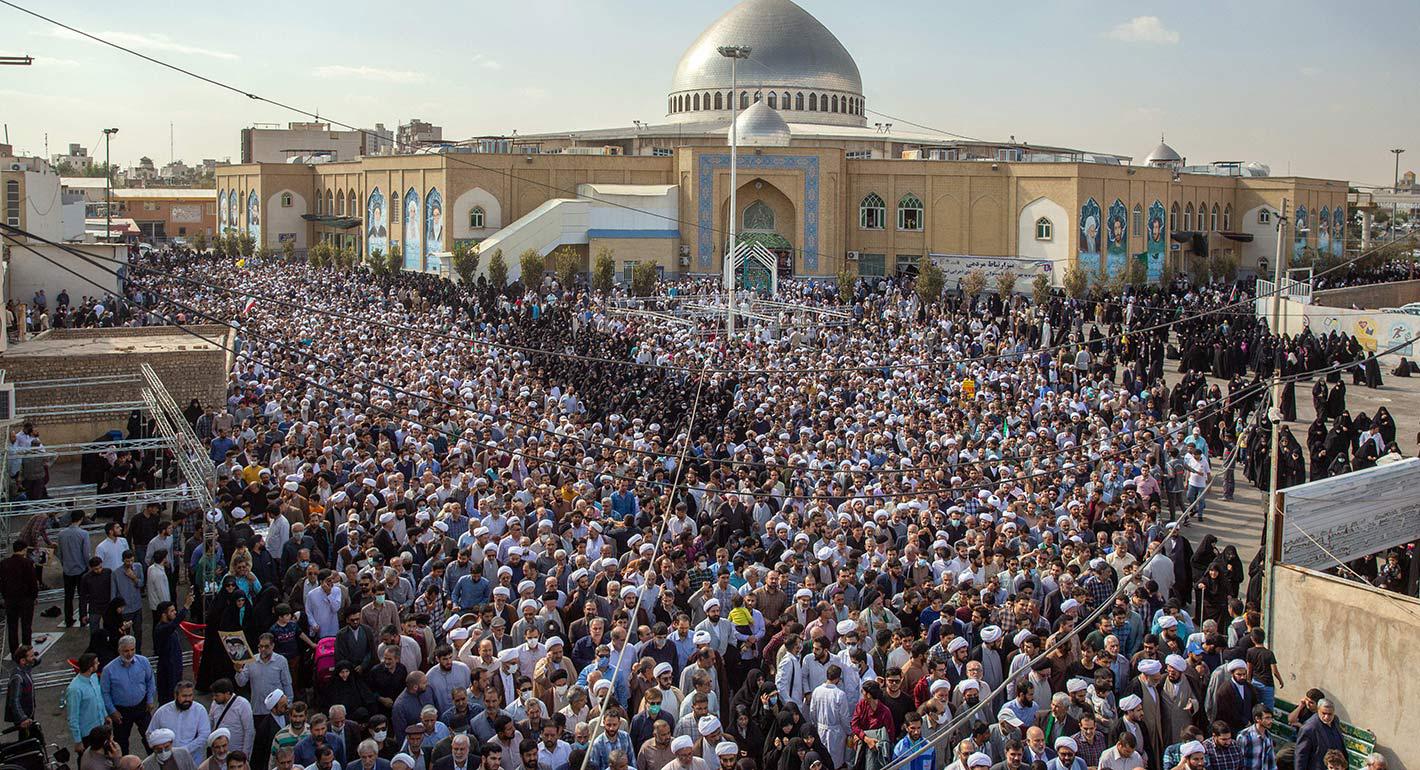From tearing head scarfs to chanting marg-bar (death to) Khamenei, protesters in Iran have clearly been emotionally empowered to rebel through symbolic repertoires of dissent. Yet, despite the fact that mobilizations persist in periphery areas such as the Kurdish region and Baluchistan, in the last month, there has been a lull in strike action and demonstrations in important symbolic cities for the regime such as the capital Tehran, and the religious centers of Mashhad and Qom. This is because sustainable movements are built upon more than just radical dissent.
Indeed, resources and networks are critical in building sustained challenges to the status quo. Thus far, the protesters seem to have limited support from more resourceful and established actors within the above cities, such as the bazaar merchants (owners of Iran’s traditional market shops) and the clerical class.
In early December, bazaaris in several Iranian cities, most notably in Tehran, participated in a three-day general strike. Despite this show of solidarity built on discontent with the government, full-fledged support similar to that which was offered to Khomeinian clerics by bazaaris during the Iranian Revolution (1978-9) has not been forthcoming. The protesters today are set back by difficulties in securing underground safe havens, efficient mobilization spaces, and steady sources of financial support for the movement, which the bazaaris could provide.
Several hawza (seminary) figures in Qom have criticized the judiciary’s decision to execute some protest participants. However, outward pledges of support for the movement from the Qom and Mashhad seminaries—the core of the regime’s symbolic constituent base—have not emerged. Although a shift in their allegiance would turn the ideological tide in favor of the movement, there are significant obstacles to achieving this network expansion.
The bazaaris and clerics have a deep strategic and historical alliance dating even before the Iranian Revolution. Dubbed the “inseparable twins,” the mosque and bazaar played a significant joint role in the constitutional revolution of 1905-11, coup d’état of 1953, 1963 uprising, and the 1978-9 Iranian Revolution. Their enduring partnership was primarily a result of the shared threats they faced. The priority of survival also plays a role in the thinking of the hawza clergy today. The steeply secular character of the current movement’s demands may stoke fears regarding the hawza’s survival in post-movement Iran among on-the-fence clerics. It is therefore unlikely that the bazaaris and clerics would oppose the regime in the face of an uncertain future.
A variable that could motivate the bazaaris and clerics’ allegiance to shift in favor of the uprising may depend on the movement’s ability to produce ideologues capable of constructing a unified vision for the government of Iran and the future role of these traditional groups outside of the velayet-e faqih system.
An arrangement for the bazaaris may include idealogues and supporters of the movement actively acknowledging and promoting the key role of the bazaars in Iran’s future economy. Regarding the latter group, a jurisprudentially sound accommodation for the hawza vis à vis state power would be necessary. A possible proposal could consider the model of Iraq’s Najaf hawza, which would see the seminary in dialogue with the state, rather than in charge of it. Though, this position would still entail a degree of agency for the seminary to pursue its religious and societal duties and initiatives, such as maintaining shrines, collecting khums (religious taxes), carrying out charity work, and providing Islamic teachings, just without the executive power of the present.
Much emphasis has been placed on painting a concrete vision for the future of Iran in which all traditional groups can visualize where they will fit. This focus echoes the attitude of Charles Kurzman’s seminal book, The Unthinkable Revolution in Iran, in which he claims that the core reason for the 1978-9 Revolution’s success was the perception of a “viable alternative” to the Shah’s monarchy. Today, the current movement’s survival in Tehran, Mashhad, and Qom may also rest on its ability to provide a blueprint for an alternative system to velayet-e faqih.
Ali Alsayegh is a PhD Candidate and Postgraduate Teaching Associate of Middle East politics at the University of Exeter, Institute of Arab and Islamic Studies (IAIS). His current academic work revolves around developing the theory of Emotional Entrepreneurism in the field of political mobilization. Follow him on Twitter: @_AliAlsayegh.


.jpg)



